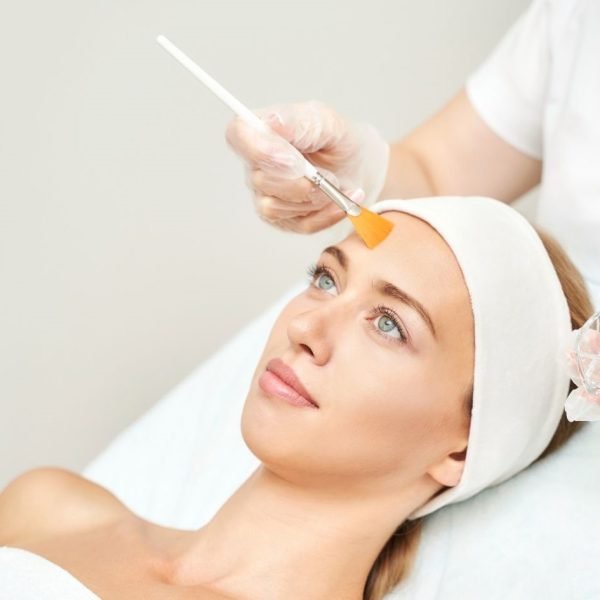Hot flashes are a very common symptom of menopause and perimenopause known as vasomotor symptoms (VMS). Over two-thirds of North American women preparing for menopause experience hot flashes; these episodes also occur sometimes with treatment or after surgeries.
What Is a Hot Flash?
Hot flashes are sudden bursts of heat accompanied by red, flushed cheeks and sweating. We don’t fully understand their cause yet; though some theories suggest it could be related to changes in estrogen levels or an area of the brain responsible for body temperature regulation.
They affect everyone differently; some might barely notice hot flashes while for others they can disrupt daily life. Not only can their severity differ but the length of time you experience them can vary as well.
“Unfortunately, you’re powerless to completely prevent menopausal hot flashes”
Hot flashes cause blood vessels near the skin’s surface to widen in order to reduce temperature, making you sweat. Sometimes this results in rapid heart rate or chills as well.
Night sweats occur during sleep, which may disrupt restful slumber. They may wake you up unexpectedly – making getting sufficient rest even harder than before!
Hot flushes, or facial flushes, refer to redness that occurs during a hot flash and causes reddening in both your neck and face.
How Long Will They Last?
That depends. Though some women may not experience hot flashes at all, others can experience them for as much as 11 years or longer; on average, however, most women only experience them for approximately seven years before moving on with life.
How to prevent hot flashes
Unfortunately, you’re powerless to completely prevent menopausal hot flashes; however, you can reduce their frequency or severity by avoiding triggers that make them more frequent or severe. Common examples are stress, caffeine, alcohol consumption, spicy food intake, tight clothing, and heat sources like cigarette smoke.
What Can Be Done During a Hot Flash
Keep cool at night, try using a “chill pillow” filled with water or another cooling material to sleep on. Use fans during the day, and wear loose-fitting clothing made from natural fibers like cotton for daily activities.
Practice deep abdominal breathing (6 to 8 breaths per minute). Do this for 15 minutes each morning and evening – and anytime when those flashes arise – until it becomes second nature. Keep active by walking, swimming, bicycling, and dancing -All these activities offer significant health benefits!
“over the counter supplements can relieve hot flashes as well”
how to treat hot flashes.
Some women can tolerate hot flashes without intervention. If they become bothersome or troublesome for you, speak to your physician about taking hormone replacement therapy (HRT) for a limited duration, typically less than five years, which has been proven effective at preventing flashes as well as providing other relief such as vaginal dryness and mood disorders during menopause.
As soon as you discontinue HRT, hot flashes may return and short-term exposure may increase your risk for blood clots, breast and endometrial cancers, and gallbladder inflammation. If HRT doesn’t seem like the solution for you, alternative treatments such as prescription treatments might offer relief:
Low-dose depression drugs like Prozac (Rapiflux), Paroxetine (Paxil/Pexeva), or Venlafaxine (Effexor) could help. Blood pressure medication Clonidine and antiseizure medication Gabapentin could also help, along with Brisdelle which is specifically tailored for treating hot flashes.
Duavee, a conjugated estrogens/bazedoxifene formula designed to treat hot flashes, may be beneficial.
B complex vitamins, vitamin E, and ibuprofen may also offer relief, though always consult your healthcare provider before taking new medication or supplements (even over-the-counter products).
Natural Herbal Remedies for hot flashes
Women have long used herbal remedies to manage menopausal symptoms. While research into their efficacy varies and results can differ greatly, some herbal supplements have proven helpful in relieving symptoms associated with menopause. It’s important to remember that herbal remedies must always be approached with caution and prescribed under guidance by a healthcare professional. here are a few commonly used ones:
Black Cohosh:
Black cohosh is one of the most studied herbal remedies for menopausal symptoms, helping reduce hot flashes, night sweats, and mood swings. However, its effectiveness varies depending on your individual circumstances and it may interact with certain medications.
Red Clover:
Red clover contains compounds called isoflavones that act like estrogen and may help relieve hot flashes while increasing bone density. Like black cohosh, its results may vary from person to person and it could interact with certain medications.
Dong Quai:
Dong Quai is a long-used traditional Chinese herb that has long been employed to manage menopausal symptoms. It may help alleviate hot flashes, vaginal dryness, and mood swings while at the same time increasing estrogen production in your system. But use it with caution, especially in individuals with bleeding disorders.
Evening Primrose Oil:
Evening primrose oil is rich in gamma-linolenic acid (GLA), which may help alleviate symptoms associated with hormonal imbalance and alleviate breast pain and hot flashes. While studies on its efficacy remain limited, mild gastrointestinal side effects have been reported from using evening primrose oil regularly.
Be mindful that herbal remedies aren’t regulated like pharmaceutical drugs and their safety and efficacy may vary significantly. Therefore, it’s wise to consult a healthcare provider before taking any herbal remedies, particularly if you have existing medical conditions or take medications – they can provide tailored advice, evaluate potential interactions or contraindications, and help make informed decisions regarding whether and how herbal supplements fit into your menopause management plan.












